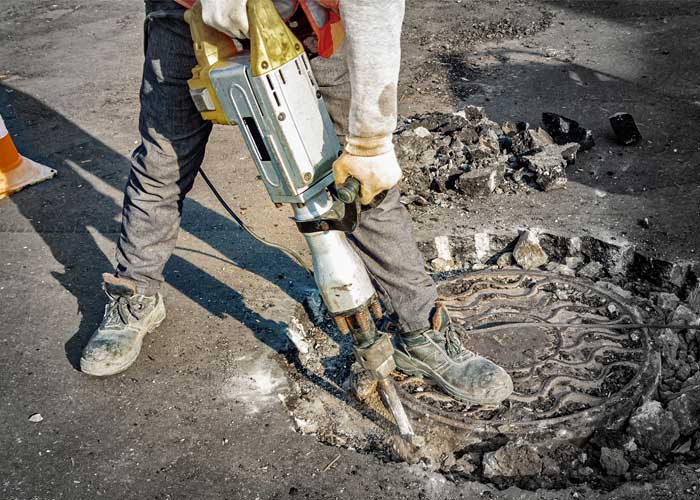Working on concrete structures, whether for construction, maintenance, or restoration, requires a detailed understanding of the distinctions between concrete removal and concrete demolition. It makes no difference whether you are constructing, remodelling, or restoring concrete structures; this is true. This is true regardless of the setting in which the contested work is being completed. Having a thorough grasp of these characteristics may enable one to operate in Australia’s oversaturated building and restoration project market while conserving time, money, and resources. In-depth coverage of the distinctions between damaging concrete and removing concrete, as well as the numerous applications for each approach, will be provided in this course. Additionally, we’ll offer advice on the techniques that suit each approach the best.
Over a long period of time, the development of the construction sector in Australia has been significantly influenced by concrete, a crucial building material. As time passes, several factors may necessitate the modification or removal of old concrete structures. Concrete is extracted throughout both the phases of removal and destruction, but these two procedures employ quite different tactics and have very different objectives.
Precaution and precision are essential for concrete removal
Selective Extraction: In this technique, specific concrete structural components are removed with care. Walls, portions of the foundation, or damaged sidewalks, for example, could be demolished. It is also possible to remove individual concrete building elements using the same method. Concrete can only be removed from the desired spot using this incredibly accurate procedure.
In addition to jackhammers, concrete saws, and other excavation tools, concrete removal necessitates the use of specialised equipment. The delicate processes that need the highest degree of precision are best suited for these instruments. Different applications are appropriate for replacing or repairing concrete elements in household settings, such as kitchen flooring and driveway removal. It’s also an excellent choice when a concrete surface needs to be completely changed because it disturbs the neighbourhood the least.
Sometimes demolishing the concrete is the most vital task
Concrete constructions may be totally or partially dismantled, a process referred to as “concrete demolition.” This can be done entirely at once or in phases when demolishing complete buildings, bridges, or other concrete structures. Your tradesman and engineers usually use bigger machinery in these situations. Larger concrete demolition equipment like excavators, hydraulic breakers, and wrecking balls may be able to handle more challenging jobs. The concrete must be broken up into manageable pieces before disposal.
Concrete demolition is an effective approach when entirely eliminating concrete is required for a purpose, such as making place for a new structure or destroying concrete roads. It offers a more expedient and cost-effective approach to get rid of a lot of concrete.
Decision-Making Component Comparison Now that you are aware of the key distinctions between concrete removal and demolition, let’s look at a detailed comparison to help you decide which option is ideal for your project. With this knowledge, the completion of your job will proceed more rapidly.
For smaller or more focused operations, concrete removal is typically the most cost-effective option. When only the essential concrete is removed, less time, effort, and material are needed. Concrete demolition, on the other hand, is economical for large-scale operations but generates a lot of waste, which might increase disposal expenses.

Influence on the local environment
Since very little waste is produced and the natural environment is not significantly harmed, disposing of concrete is ecologically benign. The environmentally responsible course of action is to choose this solution for projects where the preservation of the natural world is a top priority. Concrete degradation produces more trash overall, which may necessitate more laborious procedures to dispose of the waste generated.
Due to its focus on certain regions, the removal of concrete may sometimes be completed more quickly on smaller projects. This is because when the concrete has been removed, less time is required for cleanup and repair. On the other hand, because of the comprehensive nature of the procedure as well as the necessity for meticulous cleanup and site preparation, the destruction of concrete structures necessitates a great deal of time.
Potentials for Concrete Removal and Demolition Work in the Future
The techniques for removing concrete and dismantling buildings are continually improving as a result of the ongoing refinement of the building and remodelling processes. Professionals in the sector must stay current on the latest developments in technology, business practises, and safety measures. Here is a list of potential topics that ought to be the subject of further study:
- Research the most recent advancements in demolition technology and how they are making large-scale operations safer and more efficient.
- Learn about concrete removal practises and techniques that are ecologically friendly, such as recycling and reusing the removed concrete’s products. Green concrete removal is the term used frequently to describe concrete removal that respects the environment.
- Safety Procedures In order to safeguard the crew as well as the nearby environment, study must be done on the most recent safety regulations and best practises for concrete removal and demolition.
In summary, the complexity and requirements of the project will determine whether you should pursue concrete destruction as opposed to concrete removal as your method. It is essential to have a firm grasp of the main distinctions between the two approaches in order to choose between the two methods in the best way possible. Maintaining awareness of the most recent developments in these disciplines will enable you to make sure that the projects you take on are effective, affordable, and ecologically friendly.

